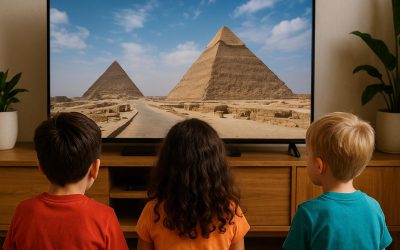A nostalgic trend is sweeping social media: the ’90s Kid Summer. Parents are striving to recreate their childhood—days spent outside, imagination unfettered by screens. Inspired by simpler times, this movement prioritizes unstructured outdoor play, social freedom, and ditching digital devices. But while experts celebrate its developmental benefits, there are practical and inclusive concerns for modern families.
Why It’s Trending
Millennial parents remember summers unlocked by possibility. This trend hopes to replicate that joy for their own kids—encouraging independence, creativity, and physical play free from adult schedules and tech distractions. Developmental psychology supports unstructured play as key to creativity and resilience growth. nypost.com
Benefits for Children
- Fosters Creativity & Independence: Free play encourages problem-solving and imaginative thinking.
- Boosts Physical Activity: Outdoor exploration promotes movement, coordination, and health.
- Enhances Social Skills: Impromptu interactions with peers teach collaboration and empathy.
Real-World Challenges
- Safety Concerns: Parents worry about urban risks, reducing the freedom once common in the ’90s.
- Need for Structure: Neurodiverse children may struggle without routines or clear boundaries.
- Logistical Constraints: Limited outdoor access, demanding work schedules, and childcare costs make full “unstructured summers” hard to replicate. wedevs.com+4bloomington-normal.macaronikid.com+4facebook.com+4nypost.comadelaidenow.com.au+2parents.com+2nypost.com+2
Balanced Implementation Tips
- Gradual Transition: Introduce half-day screen-free periods before scaling up.
- Define Safety Zones: Clearly mark yard or neighborhood boundaries.
- Supervised Playdates: Combine freedom with adult presence.
- Create Routine-Free Rituals: Try “no‑screen Friday afternoons” or weekend park explorations.
Conclusion
The ’90s Kid Summer trend reflects a collective longing for unplugged childhoods, resilience, and unstructured learning. While full embrace may be a stretch, integrating safe outdoor freedom and unplugged moments can enrich childhood—without sacrificing well-being or modern realities.
Q&A Section
Q1: Is unstructured play beneficial for all kids?
A1: Yes—most children benefit, though those with special needs may need gentle structure or support.
Q2: How do working parents enable this trend?
A2: Use structured break times, park or playground visits, and supervised neighborhood groups to recreate freedom without full-time monitoring.
Sources:
- New York Post: ’90s Kid Summer trend nypost.com








0 Comments